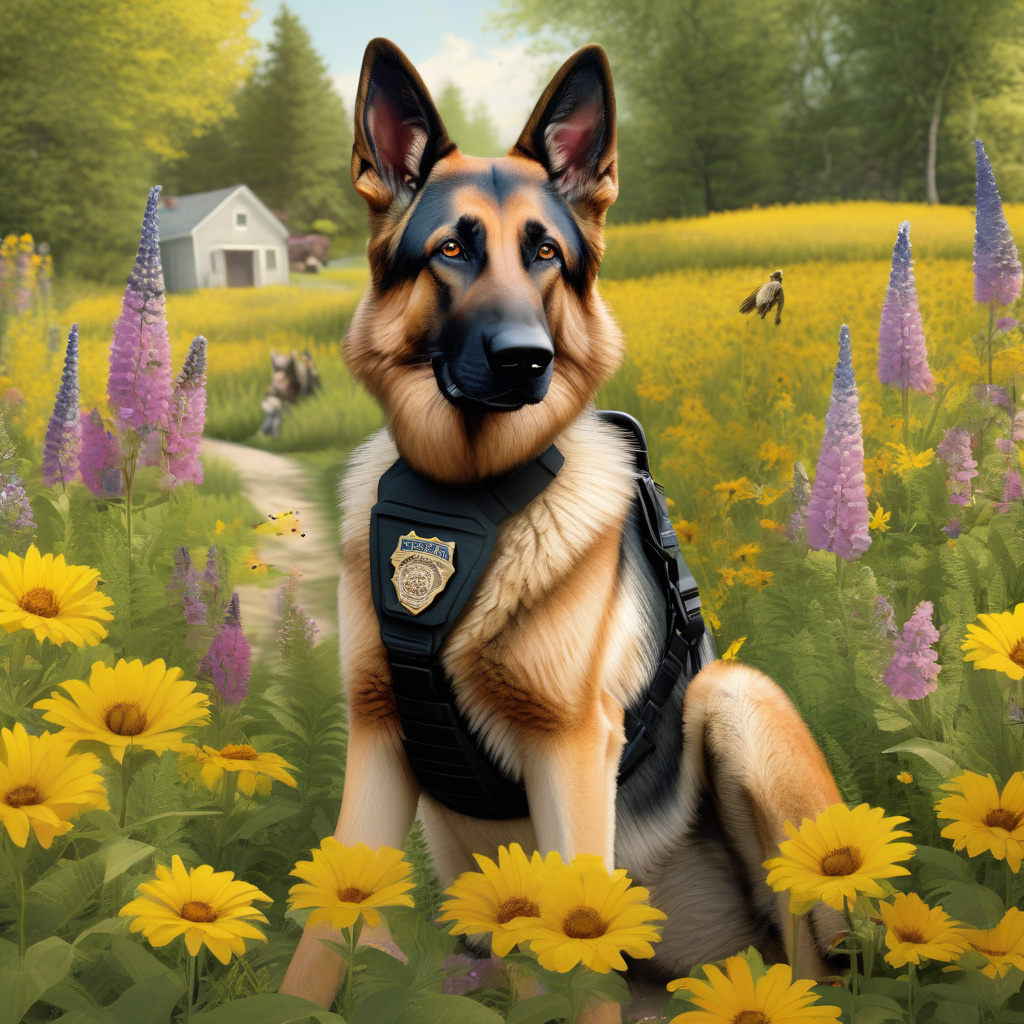Retired US Police Dog Now Sniffing Out Deadly Honeybee Disease in Michigan
At Michigan State University’s Pollinator Performance Center, researchers are enlisting an unusual ally in their battle against a devastating honeybee disease. This unlikely hero is a retired US police dog, whose keen sense of smell is now being utilized to detect the presence of American foulbrood, a highly contagious bacterial infection that affects bee larvae.
The use of dogs in scent detection is not a new concept. Canines have been employed for years by law enforcement agencies to sniff out drugs, explosives, and even missing persons. However, utilizing a retired police dog to detect a disease in honeybee colonies is a novel and innovative approach that could have far-reaching implications for the agricultural industry.
American foulbrood is a serious threat to honeybee populations, leading to the destruction of entire hives if left unchecked. Traditionally, beekeepers have had to visually inspect each individual hive frame to identify the disease, a time-consuming and labor-intensive process. By contrast, a trained detection dog can cover a large area in a fraction of the time, quickly identifying infected hives so that targeted treatment can be administered.
The idea to employ a retired police dog in this capacity came from Dr. Meghan Milbrath, a beekeeper and professor at Michigan State University. Dr. Milbrath recognized the potential of using a dog’s olfactory abilities to detect the distinct odor associated with American foulbrood. After partnering with a local K-9 training facility, a suitable candidate was found in Buck, a Belgian Malinois with a strong work ethic and a sharp nose.
Buck underwent intensive training to associate the scent of American foulbrood with a reward, becoming proficient in identifying the disease with a high level of accuracy. His work at the Pollinator Performance Center has already yielded impressive results, with infected hives being swiftly isolated and treated before the disease can spread to healthy colonies.
The use of a retired police dog for disease detection in honeybees not only showcases the versatility of canine abilities but also highlights the importance of innovative thinking in addressing complex agricultural challenges. As the world grapples with food security issues and the decline of pollinator populations, solutions that leverage the unique strengths of different species are becoming increasingly valuable.
Looking ahead, the success of this pilot program could pave the way for the broader adoption of canine-assisted disease detection in apiaries across the country. By harnessing the power of a dog’s nose, researchers are not only protecting honeybee populations but also demonstrating the potential for interdisciplinary collaborations to drive meaningful change in agriculture.
In a world where threats to pollinators are ever-present, the partnership between a retired police dog and researchers in Michigan serves as a shining example of innovation in action. By thinking outside the box and embracing unconventional solutions, we can safeguard the delicate balance of our ecosystems and ensure a sustainable future for agriculture.
beekeeping, canine detection, agricultural innovation, honeybee health, interdisciplinary collaboration












